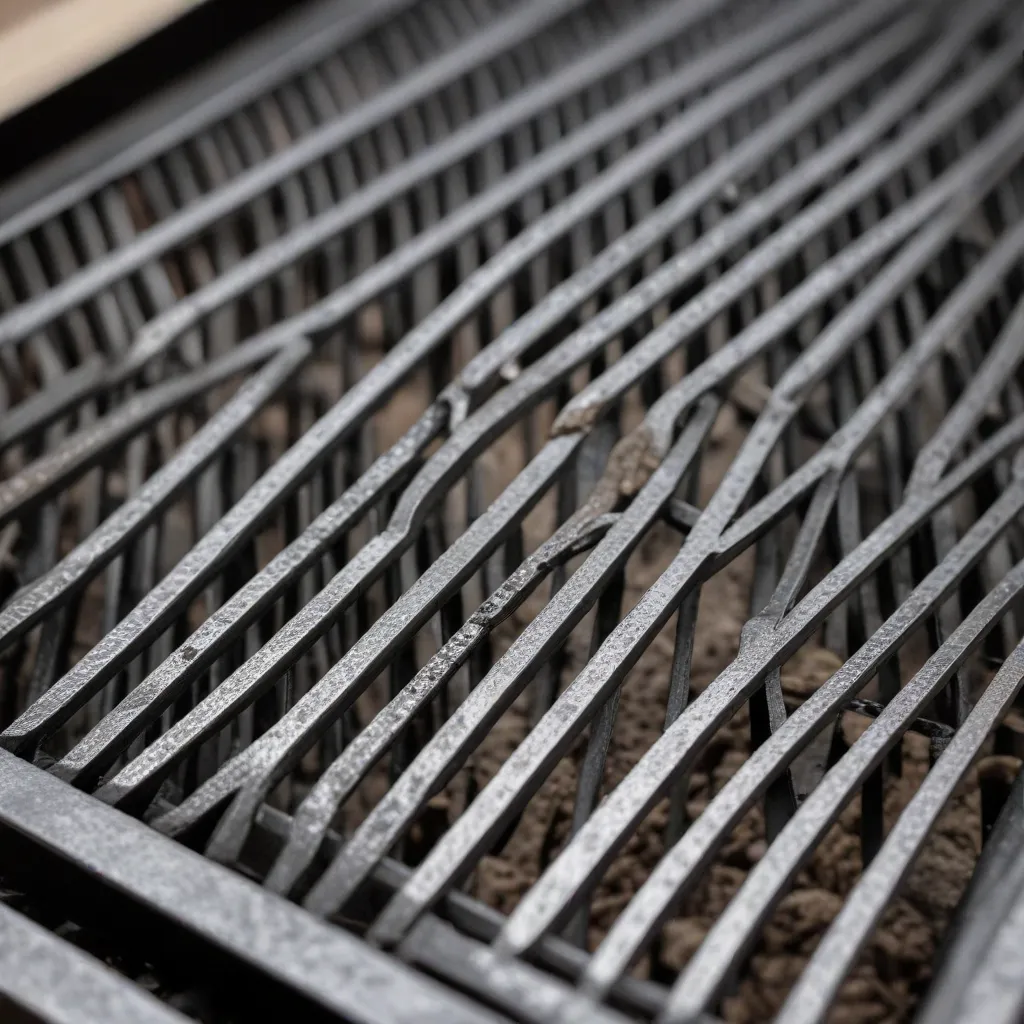
As an experienced barbecue pitmaster, I’ve learned that the key to mouthwatering, perfectly seared meat lies in the quality and care of your grill grates. After decades honing my craft, I can confidently say that the right grill grates can make or break your barbecue game.
The Science Behind Non-Stick Grill Grates
Ah, the age-old struggle of food sticking to the grates – every pitmaster’s nemesis. It’s a frustrating phenomenon, but understanding the science behind it can help us overcome this challenge.
You see, those seemingly smooth metal grates are actually quite rough under a microscope. They’re covered in microscopic scratches, pits, and valleys. When food hits those grates, the colder compounds in the meat, fish, or veggies form a strong bond with the hot metal. It’s like a magnetic attraction that just won’t let go.
Now, some experts will tell you to oil those grates to create a non-stick surface. But here’s the thing – that oil can actually make the problem worse. Above the smoke point, the oil cracks, smokes, and carbonizes, leaving an uneven, sticky layer that’s even harder to work with.
The secret lies in applying a thin layer of oil directly to the food itself. As the meat sizzles and releases steam, that oil-coated surface creates a slippery barrier between the food and the grates. The cool food lowers the temperature of the metal, preventing that nasty carbon buildup. It’s a game-changer, I tell you!
Mastering the Art of Grate Selection
Not all grill grates are created equal, and choosing the right ones for your setup can make a world of difference. Let’s dive into the key factors to consider:
Material Matters
When it comes to grill grates, the material is paramount. Cast iron may be a classic, but it’s notoriously sticky due to its rough, uneven surface. Stainless steel or coated cast iron are far superior options, providing a smoother, more consistent cooking surface.
Size and Spacing
The size of your grates should match the capacity of your grill. Ideally, you want enough surface area to accommodate your entire menu without overcrowding. And the spacing between the grates? That’s crucial for allowing proper air flow and even heat distribution.
Grate Design
Believe it or not, the shape and design of the grates themselves can impact performance. Look for grates with a slight concave or V-shaped profile – this helps channel those precious meat juices away from the flames, preventing flare-ups and keeping your food moist.
Durability and Maintenance
Your grill grates are the workhorses of your barbecue setup, so they need to be built to last. Look for grates made from high-quality, rust-resistant materials that can withstand the rigors of high-heat cooking. And don’t forget about ease of cleaning – removable, easy-to-maintain grates will save you time and hassle in the long run.
Keeping Your Grates in Tip-Top Shape
Now that you’ve invested in the perfect grill grates, it’s time to learn how to properly care for them. After all, well-maintained grates will reward you with years of flawless, stick-free grilling.
Pre-Heating and Cleaning
Never, ever skip the pre-heat step. Letting your grill reach the right temperature before adding food is crucial for creating that sought-after sear and preventing sticking. And once your session is done, make sure to clean those grates thoroughly. A quick scrape with a grill brush is all it takes to remove any lingering carbon or grease.
Oiling and Seasoning
Just like a cast-iron skillet, your grill grates can benefit from a bit of seasoning. A light coating of high-smoke-point oil, like refined olive or avocado oil, will help create a natural, non-stick patina over time. Reapply this seasoning after each use for maximum protection.
Damage Control
Despite your best efforts, sometimes food will still stubbornly cling to the grates. When that happens, don’t panic – there’s a trick up my sleeve. I’ve actually ground down the front edge of one of my trusty spatulas to create a razor-sharp taper. This allows me to gently shear off any stuck-on bits, preserving those precious caramelized surfaces.
Putting It All Together: Recipes and Flavor Pairings
Now that we’ve covered the ins and outs of grate selection and maintenance, let’s talk about how to put all this knowledge into practice. As a pitmaster, I live for creating bold, unforgettable flavor combinations on the grill.
One of my personal favorites is a juicy, perfectly seared tri-tip, seasoned with a robust blend of garlic, rosemary, and cracked black pepper. The key is to lightly oil the meat before placing it on my custom stainless steel grates, which have just the right spacing to allow for even cooking and those coveted grill marks.
Another crowd-pleaser is my cedar-planked salmon. I soak the plank in water for at least an hour before grilling, then lay the fish skin-side down right on the grates. The smoldering cedar imparts a delicate, smoky essence that pairs beautifully with the natural sweetness of the salmon.
And let’s not forget about those summertime favorites – juicy burgers and tender chicken breasts. For these, I rely on my trusty cast-iron grill grates, which I’ve carefully seasoned over the years. The slightly concave shape helps corral those flavorful juices, keeping my proteins moist and delectable.
Conclusion
Folks, when it comes to barbecue, the grill grates are the unsung heroes. They may not get the same fanfare as the smoker or the rub recipe, but trust me, they’re just as crucial to your success. By understanding the science, selecting the right grates, and maintaining them with care, you’ll be well on your way to becoming a true pitmaster.
So, the next time you fire up the grill, take a moment to appreciate those grates. They’re the foundation that will support your culinary magic and help you craft mouthwatering masterpieces time and time again. Now, who’s ready to get grilling?

